My secret brothers and sisters
Since I was a kid, I had an almost religious approach to the trees and the forest. Can’t really say why exactly. As very small children we (with my older brother) would be taken by our parents to the woods near our house in Gdańsk (Poland) for long walks, carrying sticks, playing seek and hide, running across infinite stretches of żarnowiec (ginestri, in Italian, genet in French, with an equally poetic English name: broom), the yellow flowering tall bushes. These were mature woods, part of a natural park on the hills behind the city, stretching almost uninterrupted for 50 miles along the coast. The trees were old, majestic, mainly oaks, pines, beeches, occasionally a fir. In the middle of the forest there is a Mysterious Tree, at a road crossing, huge oak, with a huge canopy.
Two recollections imprinted in my mind remain unchanged: an impression of seriousness of the business of being in the forest, with the peril of getting lost, falling into a hole, being attacked by a boar or a wolf, or perhaps a rhinoceros, and another one, of enchantment with the individual trees. I have always viewed trees as humans of sorts, to whom you should speak and listen. As kids, we would go and hug the threes, smell their bark, and expected them to tell a secret. They were our brothers. At the same time they were a bit scary, with their twisted gnarled branches, and occasional owl hollow, strange knags. I did see the trees as humans in very explicit terms. Their roots were their feet, the leaves were their hands. Not terribly original, but sufficiently convincing to stay with me for the rest of my life.
May be that’s why, when I now see in my state, the contemporary builders cutting thoughtlessly large swaths of forest and beautiful mature trees for shade-less developments to then plant scrawny trees and bushes of phony banal landscaping, just to let the business roll, my heart cries. Stupid barbarians !!
Trees were revered by early religions. Ancient Greeks considered trees to be sources of wisdom. The holy oak of Dodona was a center of oracle activity from 2000 BC. In Polish and Lituanian tradition oaks were considered holy. The oldest Polish oak Bartek, shown here on a drawing of Wojciech Gerson of 1873 has 10 m long perimeter and is today 672 years old.
Oak Bartek by Wojciech Gerson, 1873

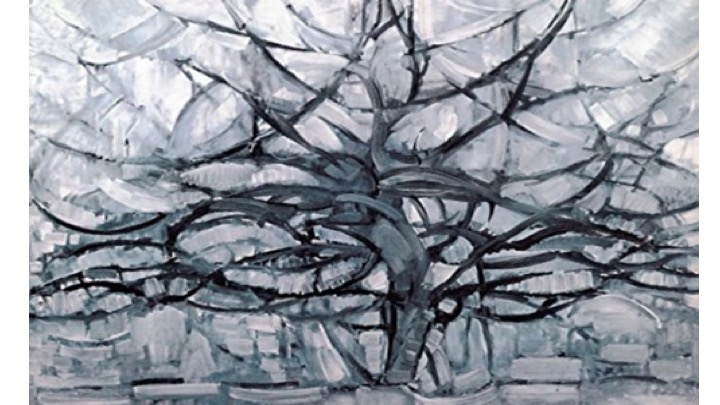 Red Tree, 1908 and Gray Tree, 1912, both by Pete Mondrian
Red Tree, 1908 and Gray Tree, 1912, both by Pete Mondrian
Clearly, I am not the only one that loves trees, and not the only ones who wants to depict them. Famous trees include a series by (pre-abstract) Pet Mondrian from realistic to very stylish. Almost every painter did some trees. I include those that impressed me most:
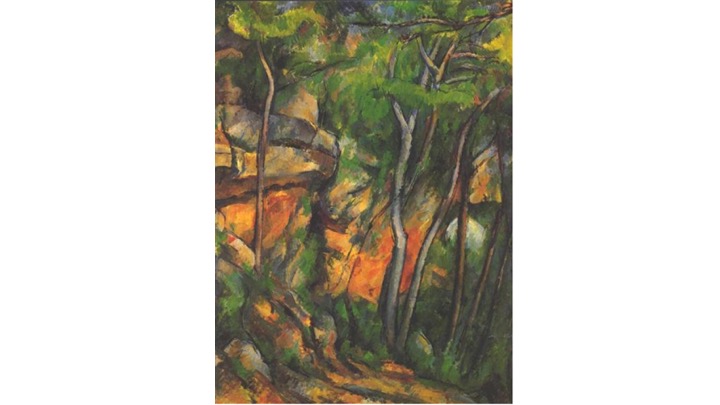 <-In the Park au Chateau
<-In the Park au Chateau
Noir, P. Cezanne 1900
Olive Grove, V. van Gogh, 1889; Landscape w/ two figures, P. Picasso, 1908  Bigger Trees near Water, David Hockney, 2007
Bigger Trees near Water, David Hockney, 2007
The tree contour per se is clearly to me its most evocative feature . You also see van Gogh playing with its twisted form for the olives , and even for cypresses. The same for Picasso, and in some instances Cezanne, and in a different setting even for Hockney.
French/American painter/sculptress Louise Bourgeois famous for her gigantic spider sculptures had a sisterly similar view of human/arboreal union, which is documented in the drawing shown below.
I saw it, and even took a picture of it visiting her show a few month ago at MOMA, and must have forgotten. But that picture must have landed in my anterior cingulate cortex (where apparently artistic creativity resides) and have popped up when I was doing my cutting.
A friend of mine directed my attention to work of William Kentridge. One his piece called Walking man turning into tree invoked a familiar feeling:
There are two things about trees that strikes you when you live in, or travel through American South: swamp trees and Live Oaks with Spanish Moss.
Swamp cypresses, on Mud Creek marshes, Chapel Hill, NC;
Bald cypress, is a sufficiently strange name, so they occasionally call them swamp cypresses. I drive by a small swamp cypress colony every day going to the university on Erwin Road, in Chapel Hill, at the border between Orange and Durham counties, on a creek called poetically Mudcreek. Their trunks attract my attention each time I pass there (I am worried about my driving quality at that segment), because they are incredibly picturesque (or at least incredibly exotic for my still Polish taste). I attach my own photo and a one most striking available at internet. The main curiosity are their roots that start spreading away from the trunk at the height of a man from the ground, or water, as the case might be. So, now you see where my inspiration for my multi-legged people-trees came from.
Live oak is also a strange name to me, but much stranger, mysterious and a bit scary is its gnarly and twisted silhouette. We have seen them in action in Savannah, Georgia during evening fog times, with the sirens of ships heard moaning and booing in the dark. Savannah has a beautiful urban setting, with a series of squares and alleys, all lined with those majestic and scary oaks draped in the pale bluish shawls of the Spanish moss.
The mysterious beauty of Savannah Oaks is connected, at least in my mind, with reasons why Savannah was spared from being burned like most southern cities captured by General Sherman at the end of the Civil War. It’s also connected to the earlier tragic battle death during Revolutionary war of a Polish-American hero, general Kazimierz Pułaski. He died while trying to stop the French allies fleeting from the attacking British, in 1779. The city of Savannah dedicated to him one of their central squares. His burial place was never identified, so there is only a monument to him erected in one of the city squares, while oaks stand the guard.
So here you have them:  all my tree brothers
all my tree brothers




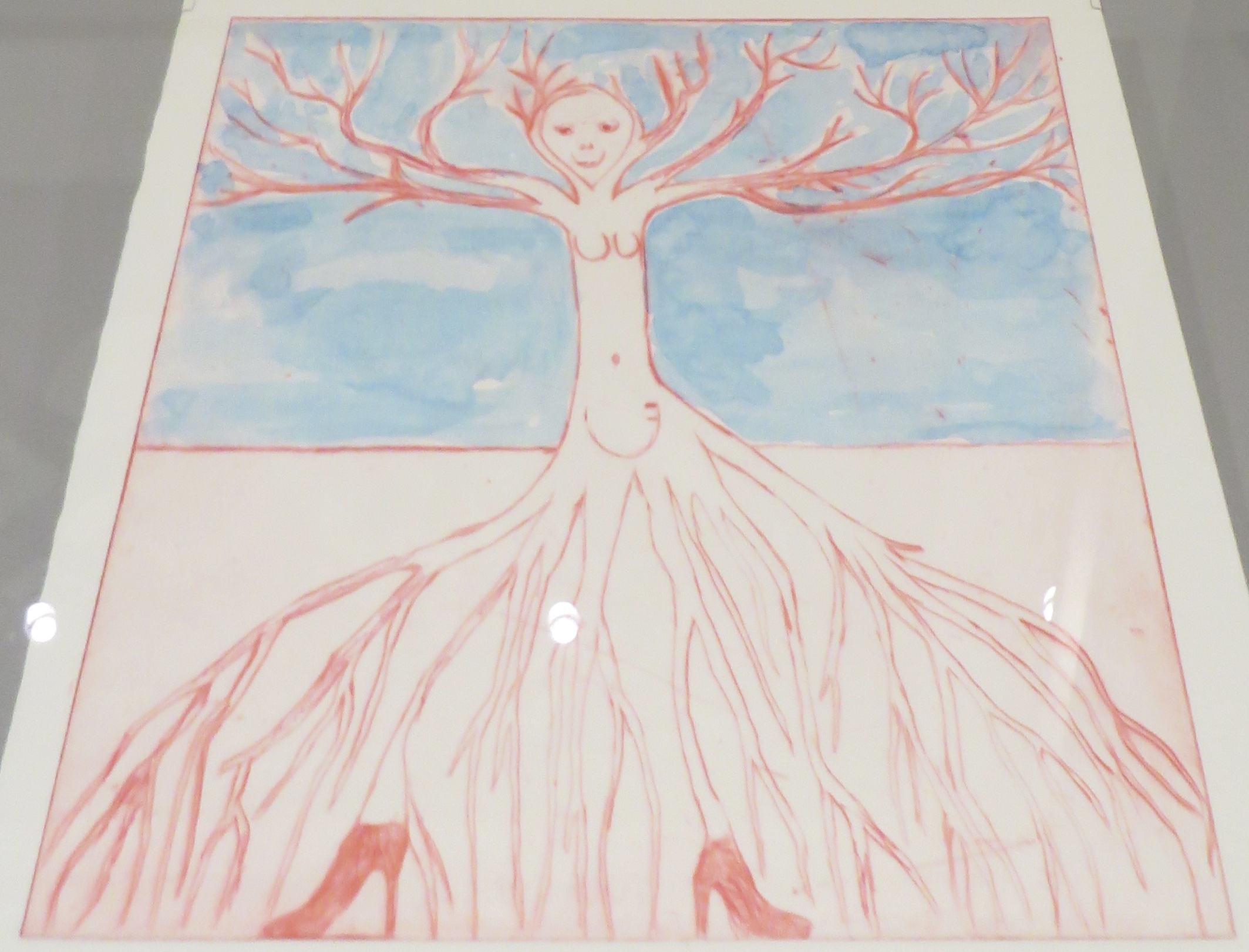
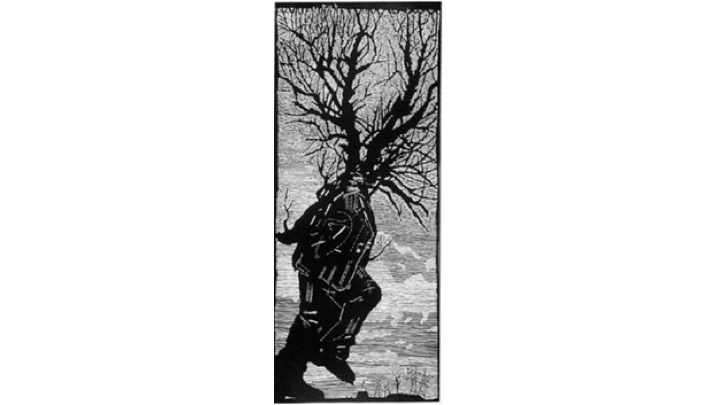
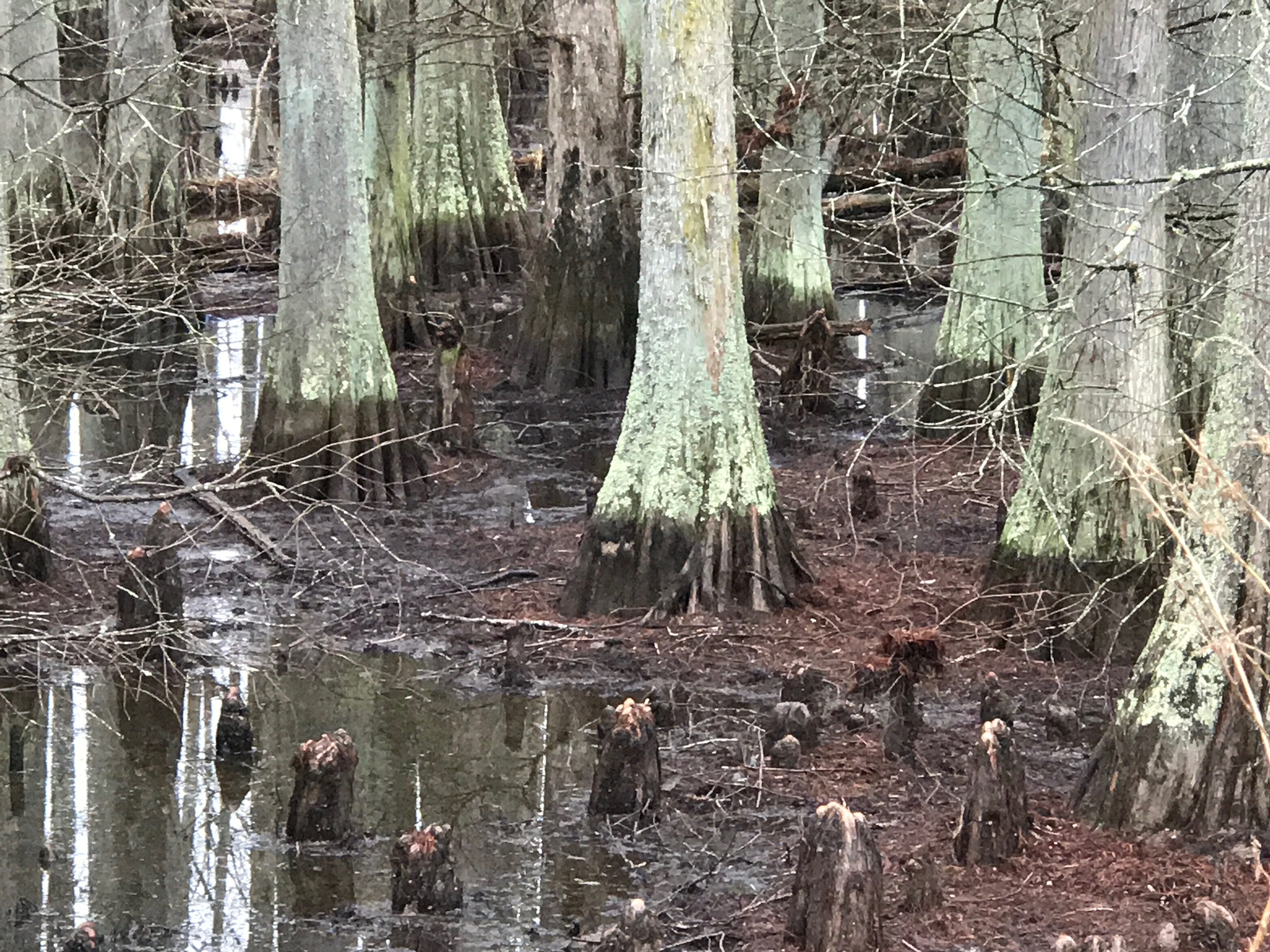









Dear Tomasz,
You touched my soul with your art and love for trees. We are never alone amongst these beauties. There, in the forest, is where my ashes will be placed to be absorbed into the trunks and roots which will permit me to one day, be part of a tree. That’s been my plan, to be a Tree Sister along with your Brothers. Thank you for your art, the Tree Sister name and the poem about trees; they will not be forgotten.
Andrew has been blessed with your friendship and I as well. Much love, Barbara
Thank you, Barbara !
Humans resemble trees in a mysterious forest: they want to plant feet in the earth; they raise their hands to the heaven searching for light, hoping for an answer